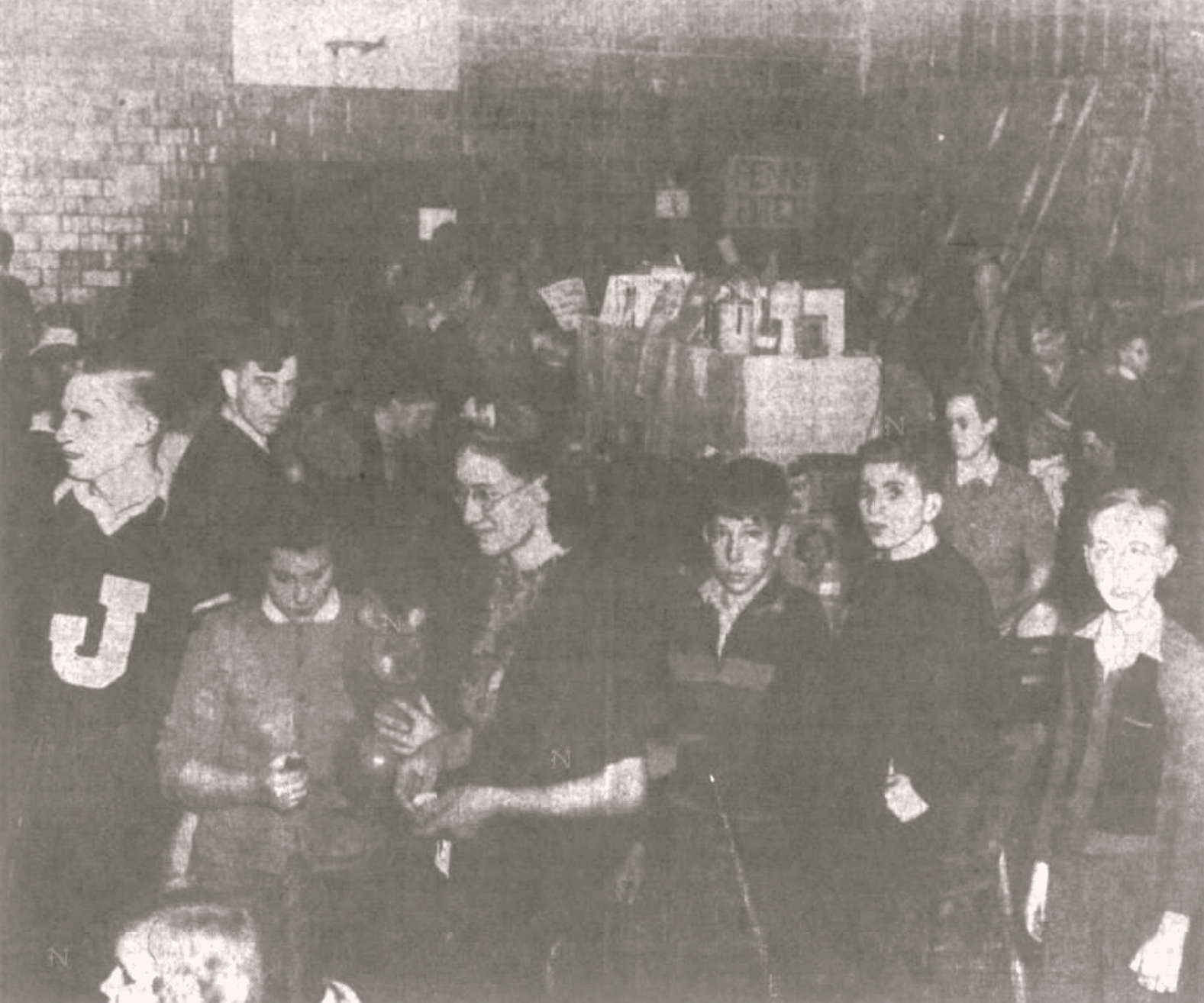Originally published in The Vidette-Messenger of Porter County on January 2, 1941.
Stroke of Midnight Is Greeted By Brief But Noisy Spree Downtown
(BY HERB STEINBACH)
At a misty midnight hour Tuesday night Valparaiso’s downtown sector broke forth in its salute to the new foundling, 1941, it smashed an earlier silence. For the most part it was a noisy but orderly demonstration.
Ten minutes before 1941 made its midwestern bow there was scarcely any activity on the local courthouse square. There were few cars moving down the wet thoroughfare. A solitary figure could be seen walking down the avenue, and here and there several couples laughed boisterously, but little else was happening outside. The police squad car piloted by Capt. Jerome Frankes, who was accompanied by Patrolman Jim Doran, circled the square, but there was no need for the “strong arm of the law” to round into action.
Then factory whistles rent the midnight air, and church bells tolled in the distance. Somewhere down on East Lincolnway a youngster exploded a fire-cracker, and a throng of people poured out from the theatre where they had attended the New Year’s Eve attraction.
Cars began streaming out on Lincolnway, seemingly from nowhere tavern revelers joined the moviegoers, and shouts of “Happy New Year” added with the blasts of auto-horns, gave vivid assurance that another new year had begun Noise-makers and horns provided additional squawks of merriment and flash crackers shot into the sky.
For 15 minutes Valparaiso continued its demonstration, but then the crowd thinned out and disappeared as suddenly as it had appeared. Several cliques of younger men remained standing around the street corners, and a near-fight broke out between a former Valparaiso high school athlete, who said his girl had deserted him, and another youth sporting a Wheeler athletic award. Friends effected an appeasement before blows were struck, and an apology was extended and accepted by the rural youth.
Earlier in the evening joy-bent Valparaiso folkーboth young and oldーinfiltrated into the city;s various taverns. Several gas station attendants reported a brisk aftersupper business, as many members of the younger set bundled themselves in cars for points outside the county. There were still others who joined in private home parties. But wherever people gathered there was one main objectiveーto forget the cars of 1940 for one brief night of reveling.
Bartenders were busy until one a.m. providing customers with beer and liquor. Crowds jammed most of the local “night spots” and hours before the stroke of midnight horns and noisemakers were distributed and paper and novelty hatsーhats that put the modern woman’s headpiece to shameーadorned the locks of Mr. and Mrs. Valparaiso. Nickelodeons and small orchestras struck up popular airs for dancers, but only occasional strains could be caught above the jabbering and joking of the merry-makers. “Auld Lang Syne” enjoyed its usual midnight prominence.




